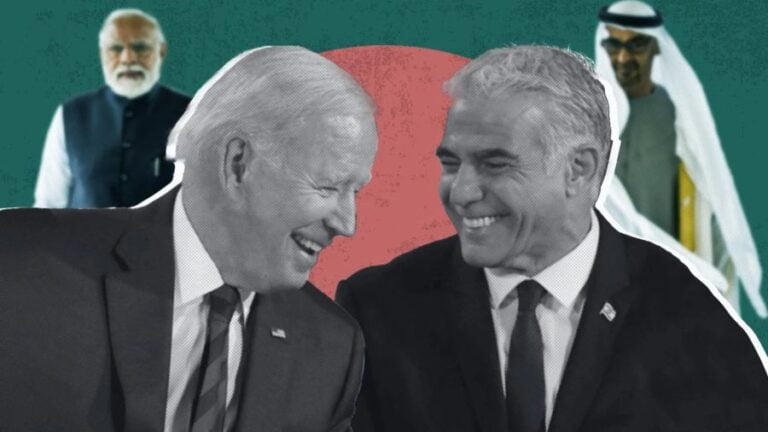Should We Fear a Military Conflict between China and India?
The recent aggravation of China-India relations during the summer of 2017 was connected with a chain of events in the Doklam Valley. For months the servicemen of the two most powerful Asian states were patrolling the territory disputed between the PRC and Bhutan throughout the summer, with their governments exchanging incensed messages. Those events accompanied this year’s Indian-Chinese bitter economic and political rivalry.
Many experts express concern for peace and stability in the entire region. However, it is felt that the possibility of a real military conflict is very low. Paradoxically, the reason for this conundrum is the ongoing economic and political competition between India and China. In a bid to overtake each other, both countries recently launched ambitious international projects that could collapse in the event of war. The two countries have invested so much in these projects (especially the PRC) that neither India nor China, in their right mind, would choose to risk such funds in a territorial dispute.
As mentioned above, India is China’s main economic competitor in Asia. It is no surprise, therefore, that the country is displaying a rather uptight attitude towards the Chinese Belt and Road Initiative (BRI), which is designed to create a single economic space in Eurasia and Africa with a common transport infrastructure and unlimited expansion potential. China has repeatedly stated that the purpose of the project is only the common good and economic development of all participating countries. However, India and some other states believe that China is trying to achieve economic and political dominance through it.
It should be recalled that in May 2017, the Silk Road-2017 Forum was held in Beijing and was attended by high-level representatives of 30 countries. Despite the persistent invitations of the PRC, India ignored this event. Nevertheless, India is aware of the need to develop a common Eurasian trade and infrastructure. India also understands that it could possibly become an active and important player in the single Eurasian space if it is actively involved in its creation. Thus, it is now important for India to develop international relations and, sidestepping Chinese influence, build a transport infrastructure that will integrate with the New Silk Route but will not be a part of it. And this India has to begin implementing as soon as possible, because over 60 states have already decided to participate in the BRI.
It is a well-known fact that India is now actively working on various transport projects designed to strengthen its influence in neighboring countries. The work is being carried out within the framework of the Act in the East program proposed by Indian Prime Minister Narendra Modi as early as November 2014. This is the successor to the Look East policy proposed in 1992 by then Prime Minister Narasimha Rao. The policy was initially aimed at strengthening India’s position in ASEAN countries (Association of Southeast Asian Nations, 10 participants). The current Act East program implies an expansion of Indian influence to Australia, New Zealand and both Koreas. However, the main challenge remains the development of relations with the ASEAN states and other immediate neighbors such as Nepal, Bhutan, Sri Lanka and Bangladesh.
Over the past two years, New Delhi has invested almost USD 5 billion in the development of international highways. This certainly does not compare with the costs incurred by China, which, according to the latest data, is willing to spend over USD 500 billion on its New Silk Road initiative. Nevertheless, India still has some space to “conquer” and claim as its own. As part of the Act in the East program, the country is investing large sums of capital into the construction of roads and railways along its borders. One of the most significant projects is the road from Northeast India through Myanmar to Thailand. The motorway will be more than 1000 km long, and the possibility of extending it to Cambodia, Laos and Viet Nam is already under consideration. This way, India will be able to significantly enhance trade with the entire Indochina peninsula, which hosts the greater part of ASEAN and which is one of the fastest developing regions in the world.
By the way, China is also trying to gain a foothold in ASEAN. To this end, the PRC is continuing with its project to build the Kunming-Singapore Railway, which will pass through all the countries of the Indochina Peninsula. Railway transportation is cheaper and more efficient than automobile transport. However, the Indian motorway could be built faster. The India-China infrastructure race also extends to the sea. The PRC is in the process of establishing the 21st Century Maritime Silk Road, and is increasing its presence in all major ports along the southern coast of Eurasia to Africa and the Mediterranean Sea. China is building a large city port in Sri Lanka, leasing and developing the Pakistani port of Gwadar, into which it promised to invest about USD 1.6 billion. Through Gwadar, the PRC will be able to maintain its maritime links with Europe and Africa, bypassing the congested and unsafe Malacca Strait. To communicate with the port, China has decided to build a railroad through Pakistani territory.
India is following suit, and has proceeded to invest USD 120 million in Sittwe Port in Myanmar. India also intends to invest USD 150 million in the port of Chabahar in Iran, which it will use jointly with Iran and Afghanistan.
It can thus be concluded that India and China are actively engaged in international economic cooperation. Rather than individual countries, their ambitious projects involve entire regions. And this means that both countries have many commitments to a large number of partners. At the same time, they have common partners. Therefore, the common interests of India, China and the countries cooperating with them are closely intertwined. Any disruption of stability could destroy their plans.
Asia is a highly volatile region. One of the main reasons for this is the terrorist threat. India, China and the ASEAN countries are confronted with this threat periodically. India and China are among the most powerful nuclear-weapon states, and are therefore largely responsible for maintaining peace throughout Asia. If they go as far as a military confrontation, this could be exploited by many extremist factions, and the Asian countries would then not be able to build roads and create free trade zones. This can put an end to the Belt and Road Initiative project and on Indian projects.
It is now vital for both countries to maintain stability in the region and a reputation in the eyes of numerous partners. It can be assumed that the competition between India and China has reached a level that practically excludes armed conflicts. And this form of rivalry, such as in the construction of infrastructure and international trade, will only contribute to the development of the entire Asian region.
By Dmitry Bokarev
Source: New Eastern Outlook







